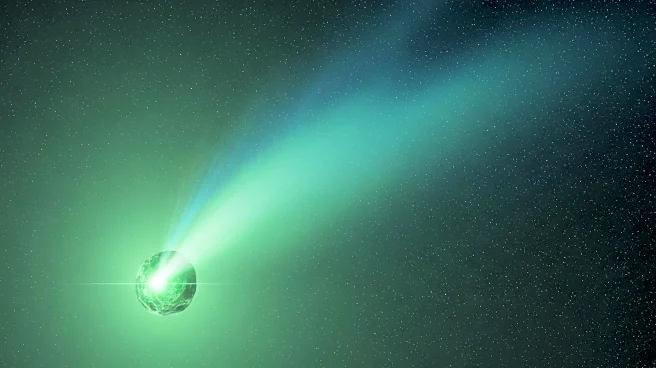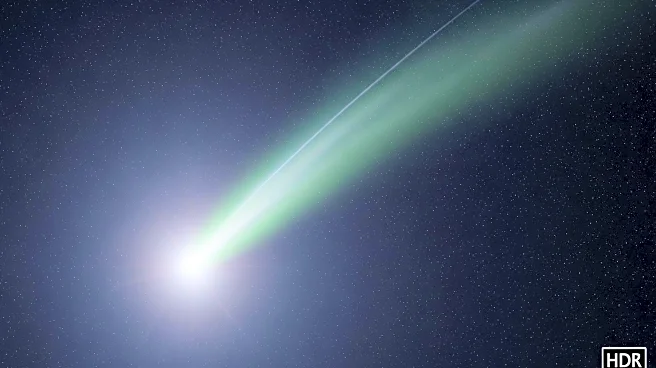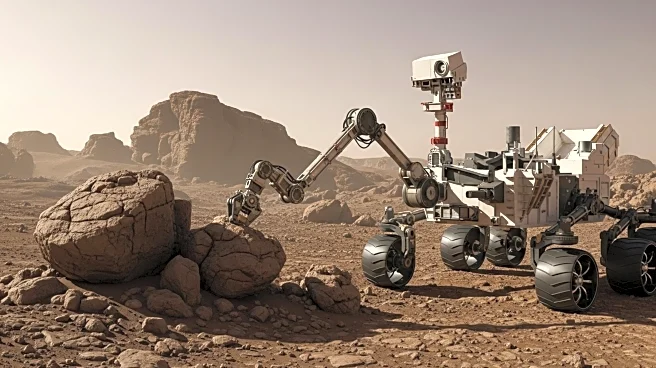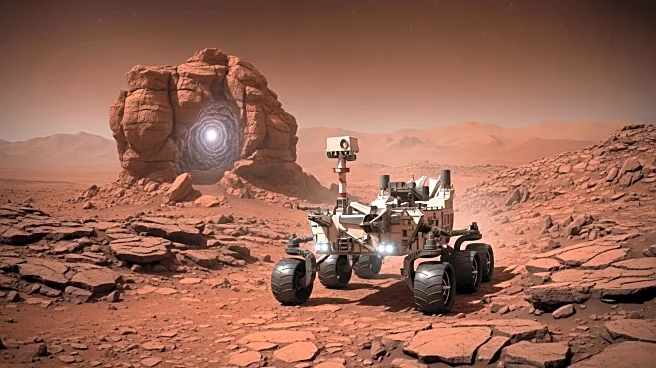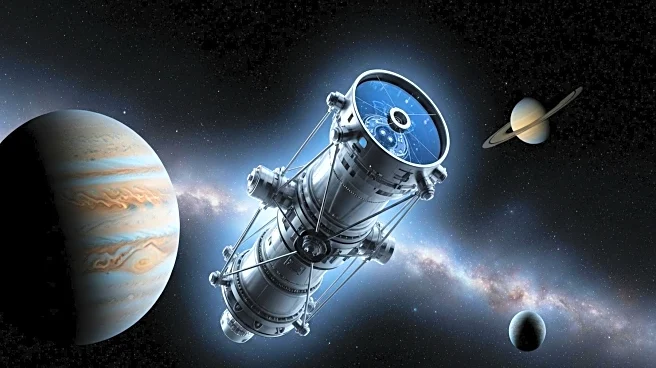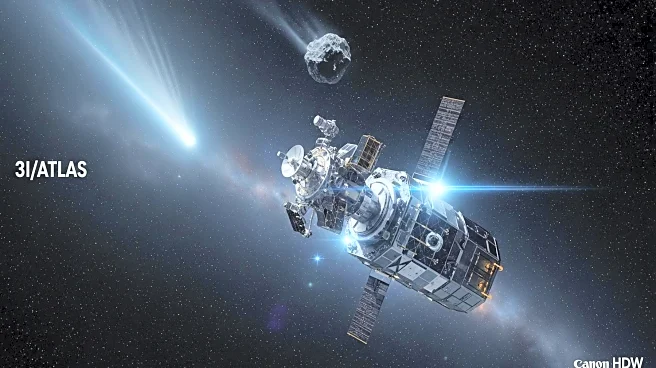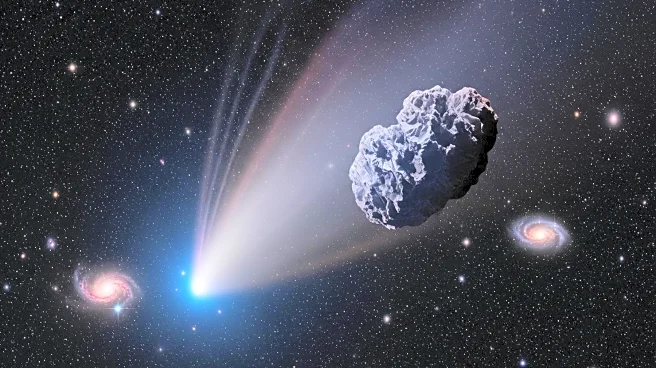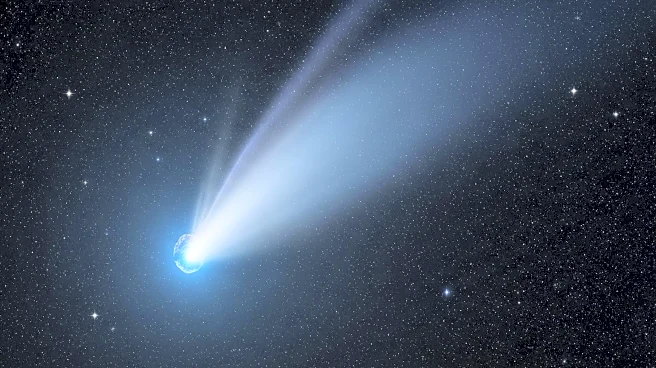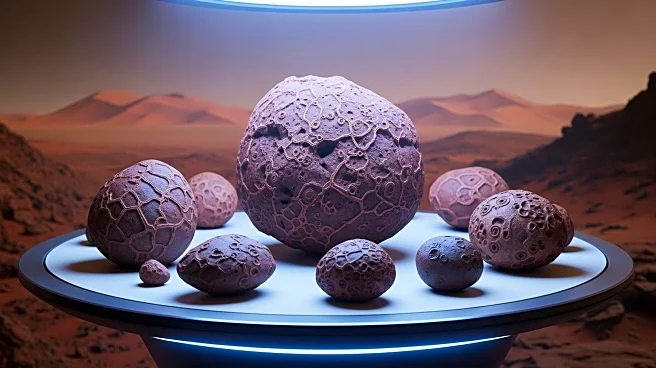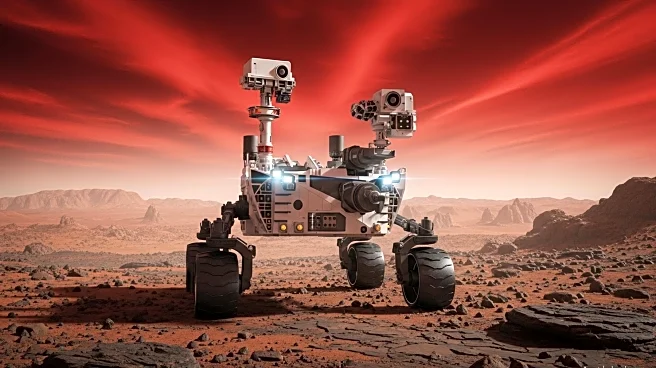What's Happening?
Recent observations of the interstellar comet 3I/ATLAS suggest it may be developing a green hue as it approaches the sun. This transformation is attributed to the comet's increasing proximity to the sun, which causes more ice, gas, and dust to be expelled from its core, forming a traditional cometary tail. The comet, first spotted in July, is traveling at over 130,000 mph from beyond Jupiter's orbit. It is believed to be an ancient object from a distant star system. Astrophotographers captured images of the comet during a lunar eclipse, revealing a surprising emerald hue. The green coloration may be due to the presence of dicarbon, a molecule formed by two bonded carbon atoms, although spectroscopic observations have not yet confirmed this. Further observations are needed to verify the comet's coloration and its chemical composition.
Why It's Important?
The potential green glow of comet 3I/ATLAS is significant as it may provide insights into the chemical processes occurring in interstellar comets. Understanding these processes can enhance knowledge of cometary behavior and composition, which is crucial for astronomers studying the origins and evolution of celestial bodies. The presence of dicarbon or other rare chemicals could offer clues about the comet's history and its journey through the solar system. Additionally, the study of such interstellar objects can inform theories about the formation of the solar system and the materials present in distant star systems.
What's Next?
As comet 3I/ATLAS continues its journey, it will soon pass Mars and reach its closest point to the sun on October 29. Scientists and astronomers will continue to monitor the comet for further changes in its appearance and composition. More observations are expected to confirm the green coloration and identify the chemicals responsible for this transformation. The comet will eventually disappear from view as it passes the sun, but it will reappear in a few months, allowing for additional study before it reaches its closest point to Earth in December.
